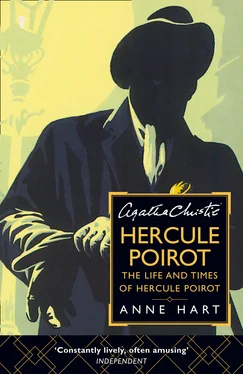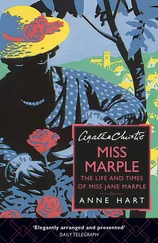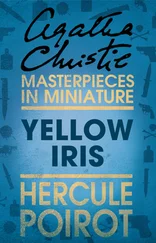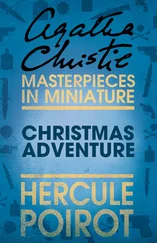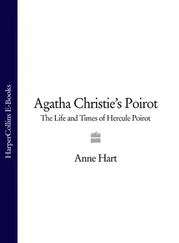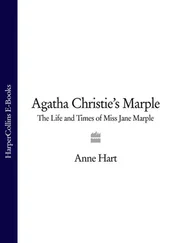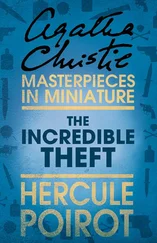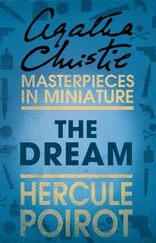‘You have a wide experience, Georges,’ murmured Poirot. ‘I often wonder having lived so exclusively with titled families that you demean yourself by coming as a valet to me. I put it down to love of excitement on your part.’
‘Not exactly, sir,’ said George, ‘I happened to see in Society Snippets that you had been received at Buckingham Palace. That was just when I was looking for a new situation. His Majesty, so it said, had been most gracious and friendly and thought very highly of your abilities.’ 16
Poirot’s retirement to the Riviera was even briefer than his retirement to King’s Abbot. By 1929 he was back in London, though tentatively at first, on a case requiring temporary accommodation and an assumed name.
‘I take the flat in the name of Mr O’Connor,’ he announced to a neighbour startled at encountering ‘a little man with a very fierce moustache and an egg-shaped head’, and added, unnecessarily, ‘But I am not an Irishman.’ As it happened, his neighbour and her friends had just had the bad luck to discover a body. Resplendent in a handsome dressing-gown and embroidered slippers, Poirot, in ‘The Third Floor Flat’, 17 had the mystery solved within a couple of hours.
In ‘The Under Dog’ Poirot was firmly back in business (‘at this present time I have many cases of moment on hand’) and settled in a flat with George in attendance. From there he was summoned to the country by a recent widow, Lady Astwell, who, against all evidence, was convinced that her husband had been murdered by his inoffensive secretary. To uncover the truth Poirot subjected a large household to a reign of terror:
‘For two weeks now I have played the comedy, I have showed you the net closing slowly around you. The fingerprints, footprints, the search of your room with the things artistically replaced. I have struck terror into you with all of this; you have lain awake at night fearing and wondering; did you have a fingerprint in the room or a footprint somewhere?’
A strange little story is ‘Wasps’ Nest’ 18 in which Poirot took as his mission the solution of a murder before it even occurred. The setting is charming:
John Harrison loved his garden, and it had never looked better than it did on this August evening, summery and languorous. The rambler roses were still beautiful; sweet peas scented the air.
Two months later the stock markets crashed around the world. We can be sure, however, that Poirot, that canny practitioner of Flemish thrift, continued to sip his tisanes with equanimity. By the end of the 1920s he was a very rich man and remained so for the rest of his life. ‘I like not the sensational. For me the safe, the prudent investment … what you call the gilded edge.’
1Later collected into books, sometimes with minor changes, many of these stories first appeared in magazines such as The Sketch (1923) and Blue Book (1923–25).
2Also published under the title ‘Mr Davenby Disappears’.
3Also published under the title ‘The Mystery of the Plymouth Express’.
4A much expanded version of this story was published in 1937 under the title ‘The Incredible Theft’.
5Also published under the title ‘The Mystery of the Clapham Cook’.
6Also published under the title ‘The Curious Disappearance of the Opalsen Pearls’.
7Also published under the title ‘By Road or Rail’.
8Also published under the title ‘The Adventure of the King of Clubs’.
9Also published under the title ‘The Dubious Clue’.
10Also published under the title ‘The Kidnapping of Johnnie Waverly’.
11Also published under the title ‘The Million Dollar Bank Robbery’.
12Also published under the title ‘The Case of the Veiled Lady’.
13The history of this delectable story is complicated. The first version appeared in The Sketch , 12 December 1923, and made other appearances under the title ‘Christmas Adventure’. In 1960 a much expanded and updated version, set in the 1950s, appeared under two titles: ‘The Adventure of the Christmas Pudding’ and ‘The Theft of the Royal Ruby’.
14Though first published as a book in 1927, The Big Four is a somewhat expanded collection of twelve stories which appeared serially in The Sketch in 1924.
15In 1929, in Partners in Crime , Tommy and Tuppence Beresford, actors in another corner of the Christie arena, parodied the exploits of Poirot and Hastings in The Big Four in their adventure ‘The Man Who was No. 16’.
16Presumably in defending the existing social order against the Big Four. It was probably at this time, for his share in the victory, that Hastings received an OBE. We are never told what Poirot thought of that .
17Also published under the title ‘In the Third Floor Flat’.
18Also published under the title ‘The Worst of All’.
‘Monsieur Poirot here,’ said Japp. ‘Quite a good advertisement for a hair tonic, he’d be. Face fungus sprouting finer than ever. Coming out into the limelight, too, in his old age. Mixed up in all the celebrated cases of the day. Train mysteries, air mysteries, high society deaths – oh, he’s here, there and everywhere.’
—THE ABC MURDERS
For many the 1930s were disturbing years. Even among Poirot’s clients it was understood that most people were not as well off as before. Complained Elinor Carlisle in Sad Cypress : ‘Everything costs so much – clothes and one’s face – and just silly things like movies and cocktails – and even gramophone records!’ Some people actually became poor . ‘Darling,’ confided the Hon. Joanna South-wood in Death on the Nile ,
‘if any misfortunes happen to my friends I always drop them at once! It sounds heartless, but it saves such a lot of trouble later! They always want to borrow money off you, or else they start a dressmaking business and you have to get the most terrible clothes from them. Or they paint lampshades, or do Batik scarves.’
In Poirot’s world the uncertain political times – the ‘question’ of India, the ‘troubles’ in China, agitation against the Establishment, ‘Bolshies, Reds, all that sort of thing’ – were spoken of over cocktails and at tea. Towards the end of the decade a Europe under the shadow of war brought talk of armaments, the race for Supremacy in the Air, Hitler and Mussolini, the Spanish Civil War, ‘days of crisis’.
In Chelsea flats Poirot was apt to encounter chairs made of webbing and chromium, and in country drawing-rooms even elderly hostesses made concessions to ‘modernity’ by allowing guests to smoke. Egypt in winter was expensive, Majorca was cheap, and ‘Paris doesn’t cut any ice nowadays. It’s London and New York that count,’ cried Jane Wilkinson in Lord Edgware Dies . Bottles of mouthwash could turn out to hold liquor instead, and gold-topped perfume bottles might hide cocaine. People now flew regularly across the Channel, and in one of Poirot’s cases air travel made possible the appearance of a surprise witness from New Zealand.
In the younger generation people of fads and crazes might aspire to be ‘all S.A. and IT’, and in the older – like the Misses Tripp in Dumb Witness – to be ‘vegetarians, theosophists, British Israelites, Christian Scientists, spiritualists and enthusiastic amateur photographers’. Dinner parties might conclude with dancing to phonograph records, or with poker or bridge – in Cards on the Table Mrs Lorrimer declared: ‘I simply will not go out to dinner now if there’s no bridge afterwards!’ – or with earnest conversations, as deplored in One, Two, Buckle My Shoe :
Читать дальше
